Haydenville Historical Marker
Introduction
Text-to-speech Audio
Images
This historical marker was dedicated in 2001.
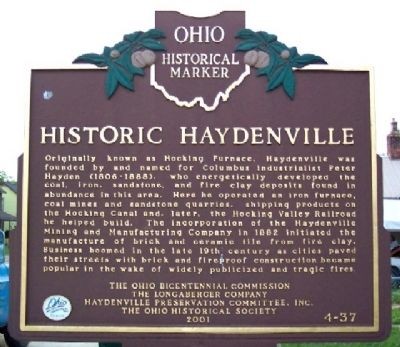
Silo House, known as the Roundhouse
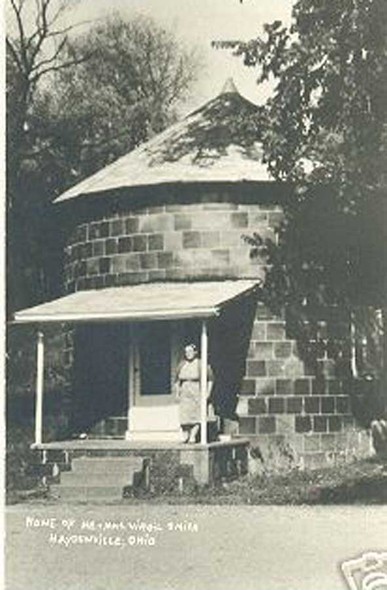
Haydenville Homes, circa 1950s
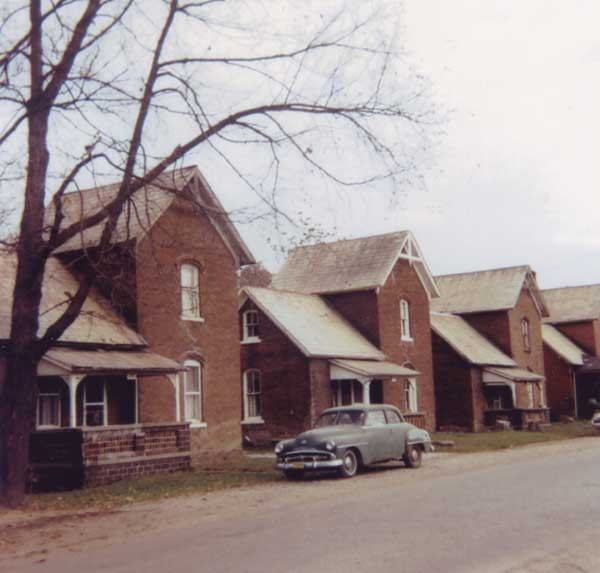
Workers at the Ohio Fireproofing Company
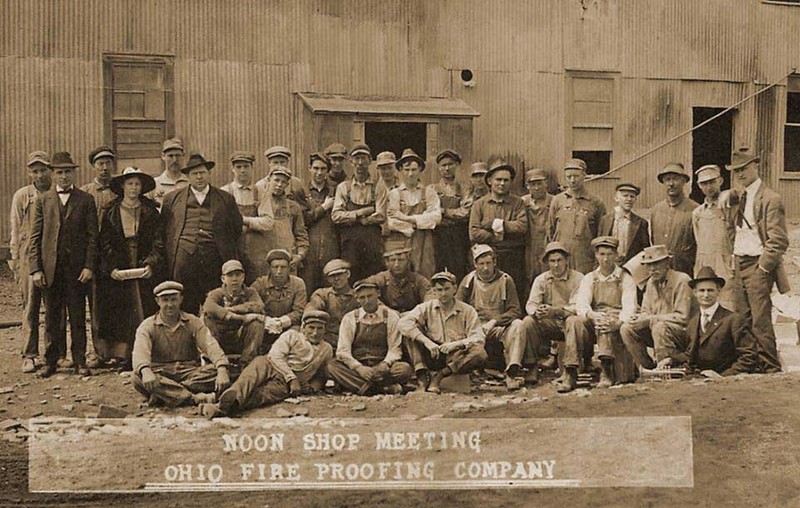
Brick production was a catalyst behind Haydenville's development, Haydenville Brick Klin
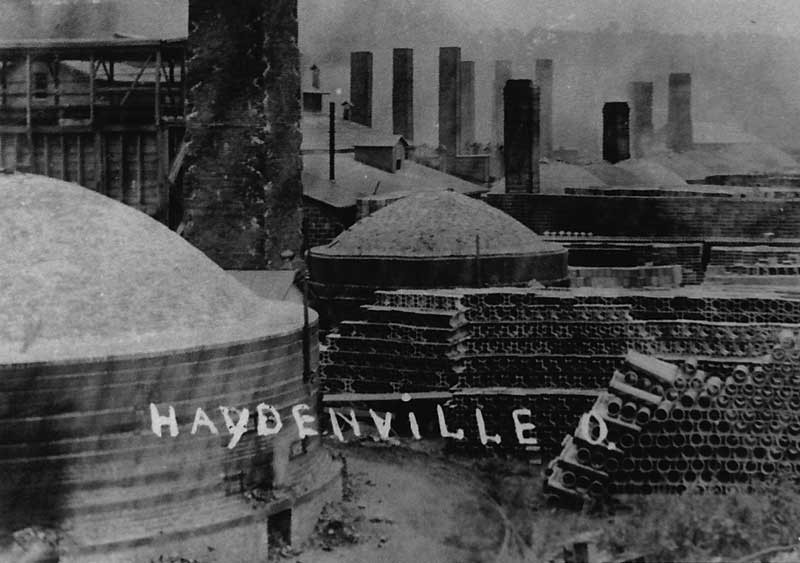
Haydenville Mining and Manufacturing Company Store
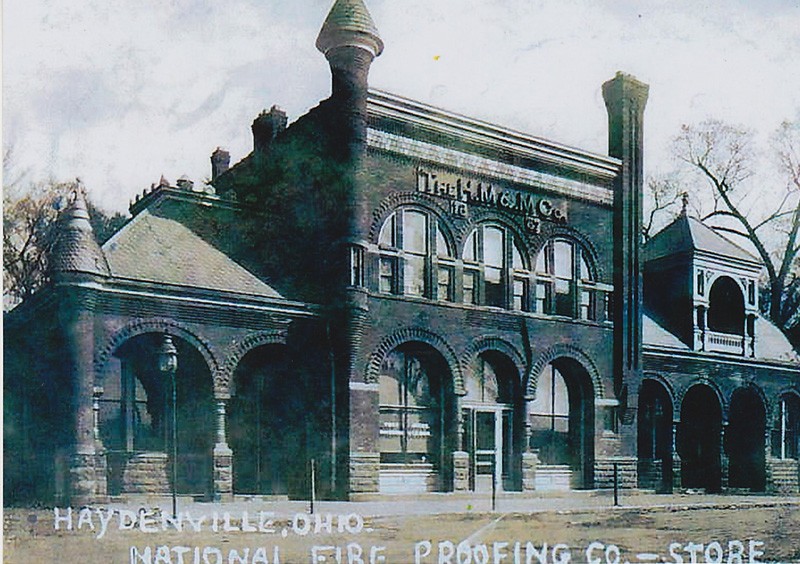
Haydenville United Methodist Church as it appears today
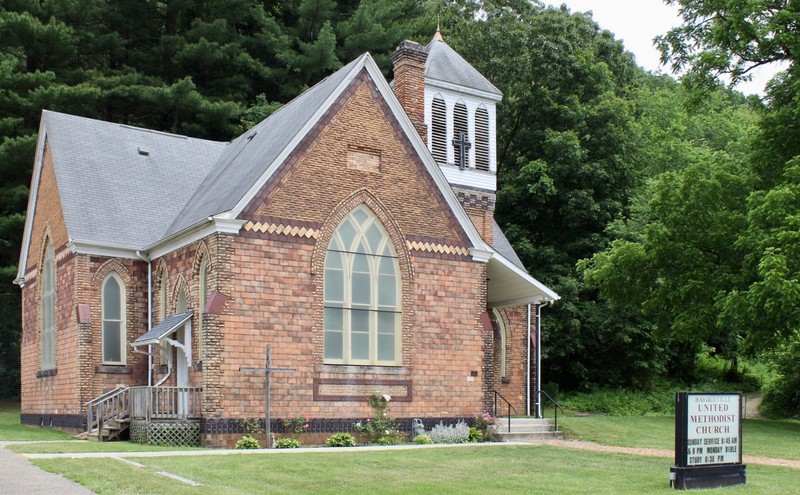
Backstory and Context
Text-to-speech Audio
Peter Hayden, was an industrialist and businessman who had business interests in New York and Chicago, but lived in Columbus. Haydenville, named after Hayden himself, quickly grew as a result of the close proximity of the Hocking River. The Hocking River provided an abundance of high-quality clay from the rich sediment deposits from the river. Haydenville was also home to Haydenville Mining & Manufacturing Company and later the National Fireproofing Company. Haydenville was constructed with local brick from the clay kilns that surrounded the town. Haydenville was the last Company Town in Ohio, as lots and homes were sold to individuals in 1964.
Peter Hayden was instrumental in the town's founding. He exemplified that of a traditional Gilded Age paternalist. However, for the context of the time, Hayden was viewed as progressive in the way he managed the town. Hayden would often stay in bunkhouses with his workers. Hayden delivered Christmas gifts to the children of his workers and would host Christmas parties for the town. Hayden often sided with workers on union issues. Through he made a lot of early money from the convict leasing system, Hayden would often teach inmates tangible and applicable skills and then offer them full-time jobs upon their release.
Peter Hayden, being an astute businessman, had the town built entirely from brick fired at Haydenville. This served a dualistic purpose. First, by building the town of his brick, this served as a catalog and showcased the structural quality and the intricate detail of the bricks to potential buyers. This led to Haydenville possessing a unique architectural aesthetic as one Ohio University professor coined the term “Sawyer Gothic” architecture. Secondly, by building the town from Haydenville Brick this cut down on production costs allowing Hayden to make more money.
Haydenville provides insights into what life was like for a tile factory laborer. At its height, the Haydenville Mining and Manufacturing Company provided jobs to roughly 360 employees at the company brick plants, railroad facility, and the coal and clay mines. Life as a brick plant worker was extremely labor-intensive and hot.
Sources
Carrying Coal to Columbus . Performed by Nyla Vollmer . United States . WOSU Public Media .
Photo by William Fischer, Jr., June 1, 2009
https://littlecitiesarchive.org/2011/01/16/brick-round-house-at-haydenville/
https://littlecitiesarchive.org/2011/10/08/haydenville-homes-1940-50s/
https://littlecitiesarchive.org/2017/07/05/ohio-fire-proofing-company/
https://littlecitiesarchive.org/2011/11/04/haydenville-kilns/
https://littlecitiesarchive.org/2011/01/16/haydenville-general-store/
Audrey Tompkins, Shawnee Trailtown Intern
